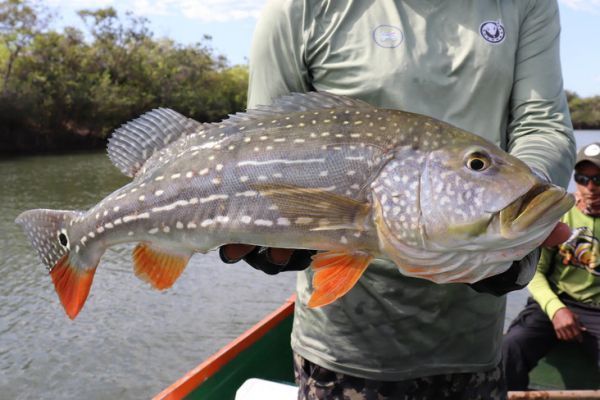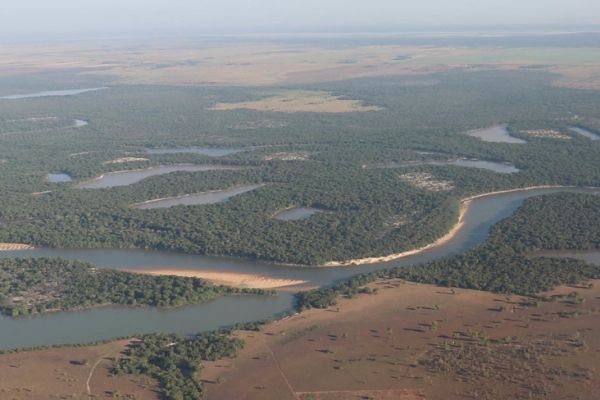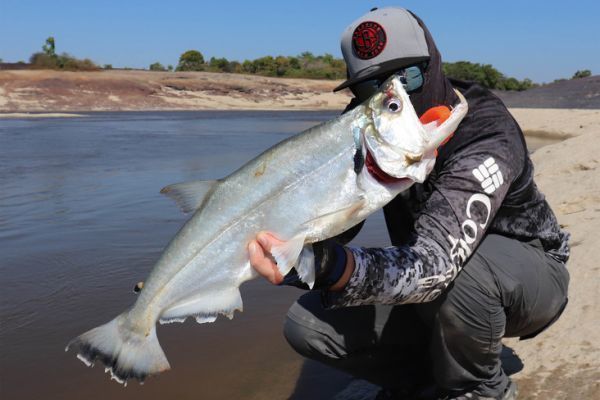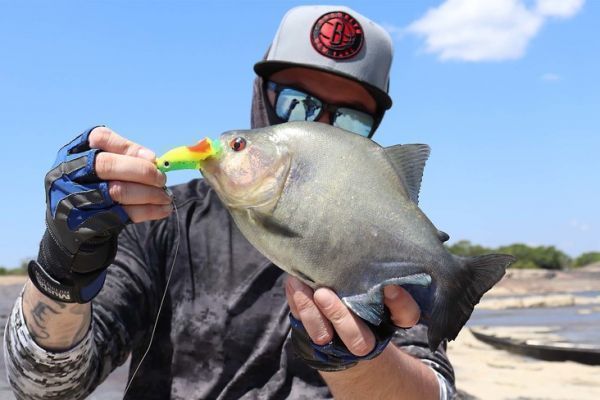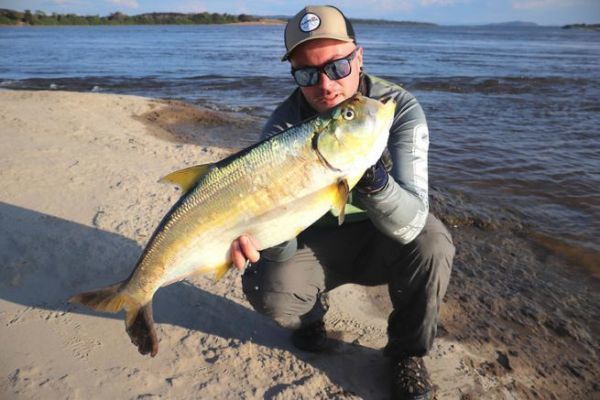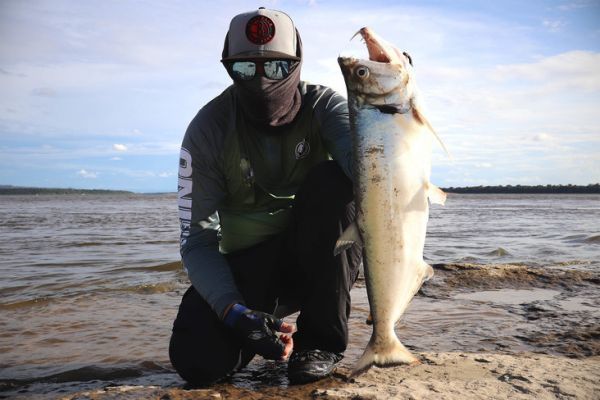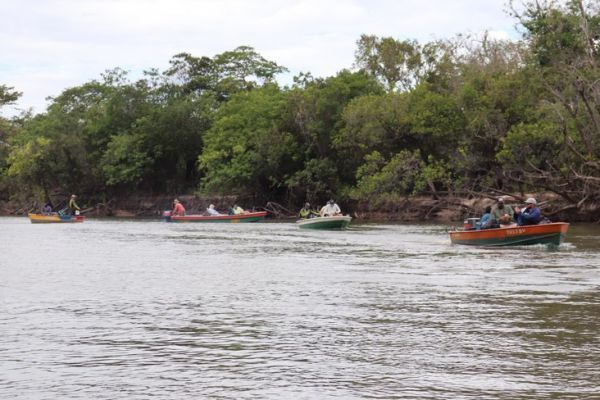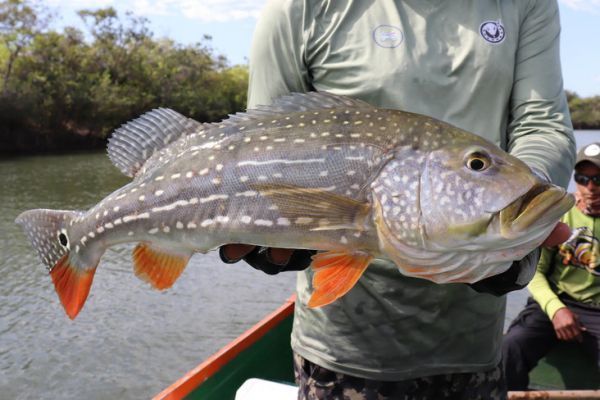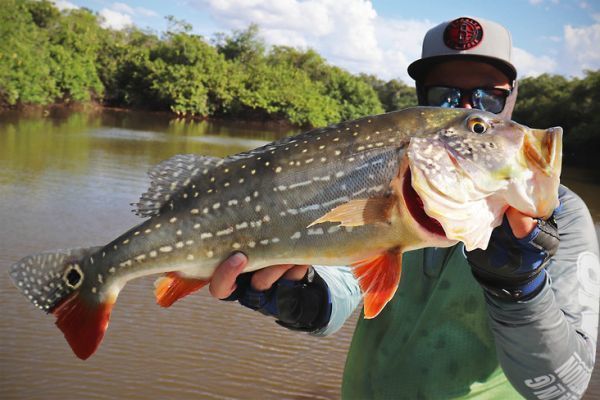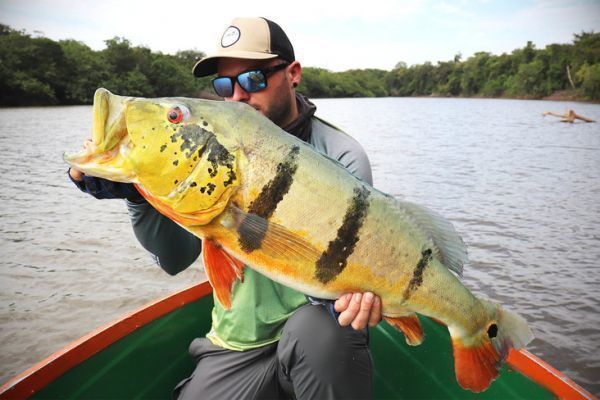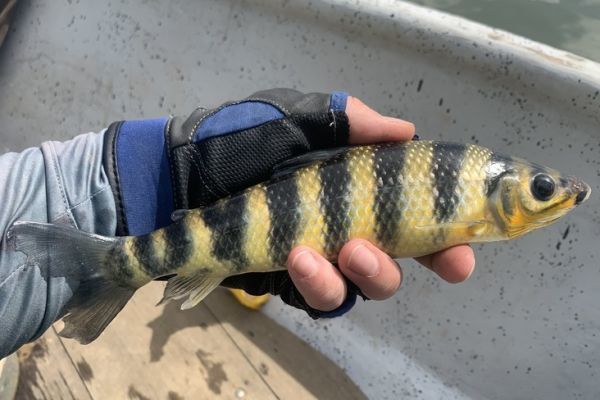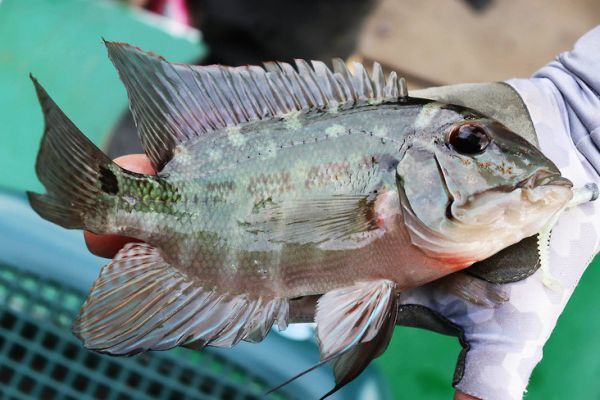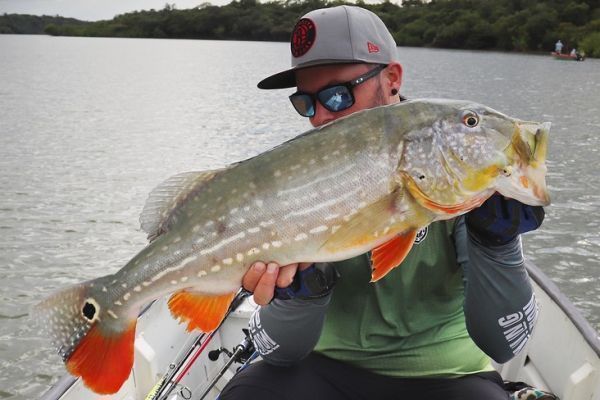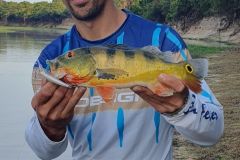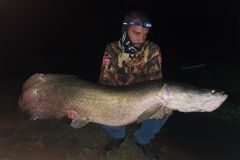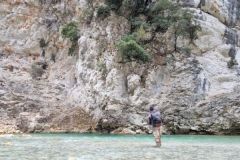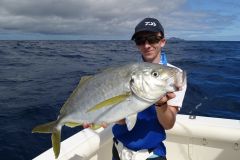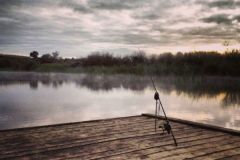The Rio Tomo
With a length of 650 kilometers, the Tomo River, located in the east of Colombia, is one of the tributaries of the Orinoco. Several organizations offer sport fishing services. This river is so big that we don't meet many people from other fishing camps, located downstream or upstream from our camp. I don't think we should consider that there is a great fishing pressure. Especially since the fishing is done only about four months a year, during the dry season.
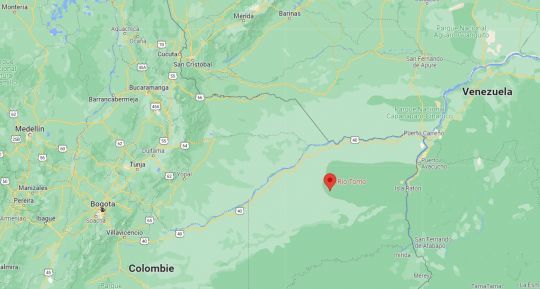
Indeed, during the rainy season, the water level is much higher, and the fish can circulate, through the forest, between the lagoons. During the dry season, the peacock bass are locked in the lagoons, and this is when the fishing is done, because they are easier to find.
On the other hand, the Tomo River is a big fish destination, so you should not expect to make a large number of catches, but if your goal is to find big peacock bass, it is the right destination!
The lagoons
After breakfast, it is time to leave for this second day of fishing on the Rio Tomo.
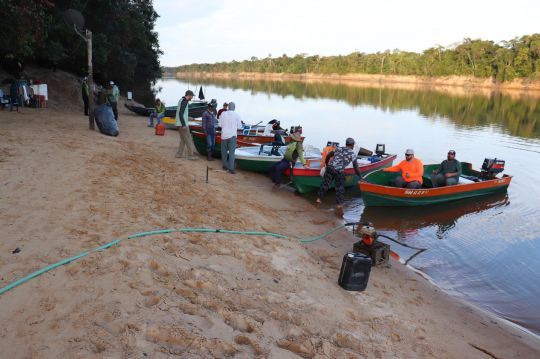
The fishing on this river consists mainly in exploring the lagoons, which are very large. It takes about half a day to explore a lagoon, even if often only a part of it is explored.

For this second day, we explore from the morning a very big lagoon, which takes the morning. My partner makes rise a very nice fish on a popper, but this one unhooks after a few seconds. This same peacock attacks, a few casts later, my jerkbait minnow, without biting, then it disappears. This is what our morning was all about.
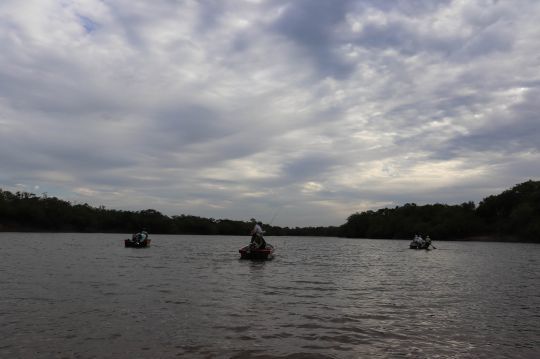
Be patient
What you should know about fishing in the lagoons is that you should not expect to get many bites. It is mainly the very big fish that live there, the smaller ones are in the main river. It's a fishery that requires a lot of patience, and you have to believe in it until the end. Having only one hit in 4 hours of fishing may not seem like much, but that's what you have to expect on this type of prospecting.
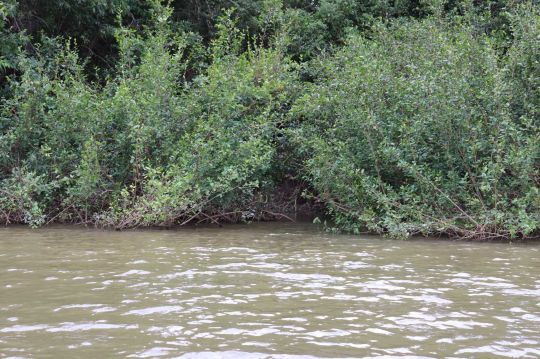
The lunch is served on the camp and we have to come back to it. Until now, all the camps I have done, proposed to take a meal with you in order to maximize the fishing time and to avoid transport time. I found this surprising at first, because I find that you lose fishing time. However, as the camp is located in the middle of the lagoons, it is not so disturbing, and allows to make a real break, to recharge.
We spend the afternoon on another lagoon, without seeing any big fish, and we finish the evening prospecting the beaches located in the river, with propbaits. This propeller lure can, at the end of the day, prove to be formidable. Generally, the peacock bass which are positioned on the beaches are complicated to take, because the water is clear there and they see the boat very well. However, in the evening, when the light decreases, and the activity of fish increases, there is a shot to play on the beaches!
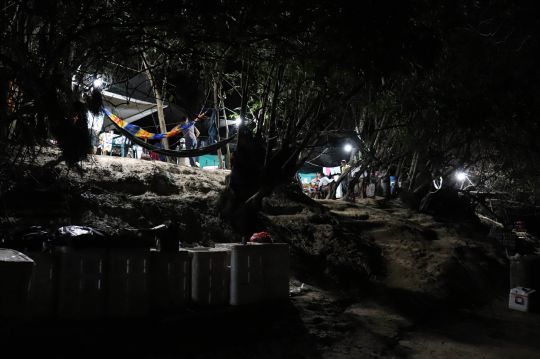
After a last fish on the beach, and now that the night has fallen, it is time to return to the camp.

 /
/ 